Two weeks ago, Karla arrived at the Texas border with her two very young children, her mother, and three siblings under the age of 15. It had taken the family a month to make the 1,500 mile journey from their home in northern Honduras, travelling by bus through Guatemala and Mexico. They had sold everything they owned to pay a network of people smugglers who bribed the way clear through checkpoints along the route.
Karla headed north, partly because she had heard the US had begun allowing children to enter legally. This is what the smugglers were saying, and the family knew others who had safely made it across the frontier.
But the main motive for the journey was fear: Karla wanted to get beyond the reach of her father and his contacts in the street gangs that have turned Honduras into the country with the highest murder rate in the world.
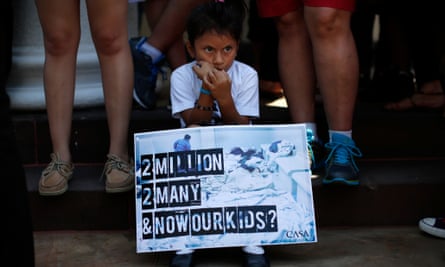
Karla says her father was seeking revenge after he was convicted of raping her as a child and sent to prison. He had already hired a gunman to kill her older brother who fled illegally to the US.
When the gruelling journey eventually brought them to the banks of the Rio Bravo, Karla thought the family’s nightmare was finally over. But after putting themselves in the care of a US customs agent, a new one began.
Instead of being taken to a detention centre in Texas for processing, they were sent straight back to Mexican immigration control to be sent home.
“They didn’t even let us speak,” said Karla, who is now staying at a spartan facility in San Pedro Sula, the coastal city that is receiving floods of migrants deported from Mexico. “We are back where we started and I don’t know what to do. We haven’t got a dollar between us.”
The mirage of an open door on the southern US border has triggered a political storm in Washington – and helped fuel an unprecedented humanitarian crisis on America’s doorstep.
Republicans have seized on the issue, accusing the Obama administration of overseeing a systemic failure of immigration policy and demanding tougher action against illegal immigrants. Efforts to pursue wider immigration reforms in Congress recently collapsed and the crisis may come to a head on Wednesday when Obama visits Texas on a pre-scheduled trip. Although he will not visit the border for fear of further stoking the political flames, the president has agreed to invite state governor Rick Perry, one of his chief Republican critics on the issue, to a meeting with local politicians and humanitarian charities in Dallas.

Earlier this week, the White House announced plans to introduce fast track deportations and $116m to pay for the cost of transporting unaccompanied children back home, but activists in Central America say that the political debate in the US is missing the point.
“All the talk is about the children in the US, but they are relatively well off,” said Sister Lidia Mara Silva de Souza, a nun from the Scalabrini order that has worked with deportees from the US for decades. “The ones who are the most vulnerable are the ones who are returned to the situations they are running from.”
The vast majority of the child migrants come from Honduras, El Salvador and Guatemala – all struggling with levels of violence tantamount to an undeclared regional war. Honduras has a murder rate of around 90 per 100,000 inhabitants. The rate in Mexico hovers around 20. In the US it is under five.
Heavily armed street gangs such as the Mara Salvatrucha and Calle 18 impose a reign of terror on entire neighbourhoods across the region, which is also a key route for Mexican and Colombian cartels shipping narcotics north.
Drug-fuelled corruption, political instability, and – in the case of Honduras, a rightwing coup – have all contributed to a situation of institutional collapse. As their states fall apart around them, many Central Americans feel that justice and security can only be found elsewhere. .
“For many people the choice is to flee or to die,” says Carlos Paz, director of the San Pedro Sula office of the church organisation Cáritas.
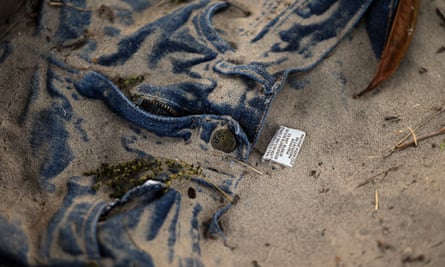
The US political row over child migrants caught fire in early June when leaked photographs showed children crushed together in a Texas holding facility while they awaited processing. Soon after, the government released figures showing that more than 52,000 unaccompanied children had reached the southern border between October 2013 and mid-June – more than double the number for the entire previous fiscal year.
These children cannot be legally deported without first going through the courts because of 2008 legislation designed to prevent child-trafficking.That law was signed by George W Bush, but Republicans blame the recent surge on the practice of placing minors with relatives in the US pending deportation hearings – a process that usually takes more than a year.
The Obama administration says the wave of migration has been triggered by people smugglers who spread rumours that children were being given legal permits to stay in the US.
But perversely, the phenomenon has also been fed by tighter border controls: unable to return home to visit children they left behind, Central Americans already living illegally in the US pay smugglers around $5,000 to bring their sons and daughters across the frontier.
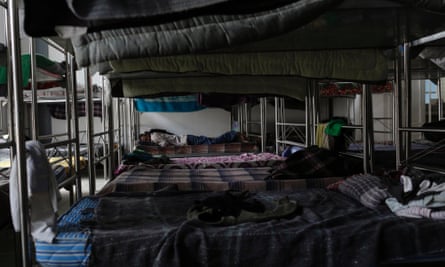
Taxi driver Roberto Cerrato said his 11-year-old granddaughter was now safely in the care of her mother,after being sent to join her 10 years after she headed north. “My granddaughter was the apple of my eye,” he said. “I cried for a month after she left, but it is the best thing. Honduras is not a place for children.”
The migrants include many teenagers travelling alone: some looking for their parents, some seeking work, and others trying to escape the violence. A good few are doing all three.
Carlos, 14, set out last month, hoping to join his mother who had fled to Houston after her employer was killed by gang members. The woman had secretly been selling drugs on gang territory, and Carlos’s mother had heard she was next. Carlos spent nearly a year living with relatives before heading north, but only got as far as southern Mexico. “Maybe I will never see her again now,” he said, wandering aimlessly around the city centre waiting for an elder brother to pick him up.
San Pedro Sula is the most violent city in the world, with a murder rate of around 180 per 100,000. Surviving here begins with knowing the invisible lines that mark the boundaries of rival gang territories, and respecting the de facto curfew that falls at sunset. It is also important to see, hear and say as little as possible. Most residents who agree to speak to a journalist do so anonymously.
There is no choice, they say, but to accept the “war taxes” the gangs extort from businesses, or the “protection taxes” they levy on family homes. If there is a murder, it is better not to go to the funeral. Church organisations and some NGOs do have a presence, but some will admit they have to obtain permission from the gangs and stay away from controversial topics.
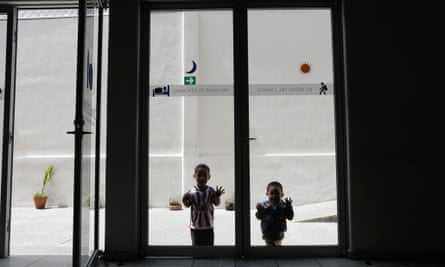
Earlier this month the Honduras government claimed the murder rate had fallen by 17% in the first three months of this year, but the announcement was met with scepticism. Two workers at the San Pedro Sula morgue, interviewed separately, said the number of bodies they receive is significantly higher today than it was a year ago.
Stories are also piling up of young children forced to work as lookouts, messengers or spies for the gangs. Eight children, between the ages of 7 and 13, were kidnapped and killed in La Pardera barrio during May. Word on the street is that they were killed for refusing to join the dominant local gang.
“In this job you become hardened to seeing death,” says one of the morgue workers who recovered some of the bodies, and asks his name not be published. “But to have to recover a child who has been cut to pieces and burned. That was just too much.”
US politicians have called on Central American parents not to expose their children to the many dangers facing migrants on the journey through Mexico, mentioning only in passing the desperate situation they are leaving behind.
“Tens of thousands of young children are being exploited and are being put at great danger,” secretary of state, John Kerry, said last month at a meeting of Central American leaders in Guatemala. “The lives of children cannot be put at risk in this way.”
The threats are real, and activists are receiving increasing reports of kidnapped and missing children in Mexico. But dozens of interviews in Honduras showed that most Central Americans are fully aware of the danger – yet many still feel that they have no choice but risk the journey north.
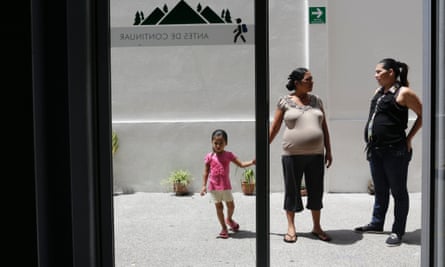
The gravity of the situation was reflected on Wednesday, when the UN high commission for refugees called for Central American migrants to be treated as refugees displaced by armed conflict. “The US and Mexico should recognise that this is a refugee situation, which implies that they shouldn’t be automatically sent to their home countries but rather, receive international protection,” the agency said.
Many in Honduras believe the Mexican government is stepping up its pursuit of migrants in deference to growing US pressure. During congressional hearings on the crisis in June, the House homeland security committee chairman, Michael McCaul, berated Mexico for not doing more to stem the tide of children. “If we can close the southern border of Mexico, that stops 99% of our problem,” he said.
The Mexican government is unlikely to admit publicly to doing the US bidding, but the number of deportations has risen dramatically. The children’s reception centre in San Pedro Sula received 4,001 child deportees during 2013, compared to 5,767 in the first six months of this year.
Several times a week, a convoy of buses brings the latest group of migrants turned back from Mexico: earlier this year the convoys had four buses and arrived twice a week. Now there are three convoys a week, each with seven busloads – many of them including entire family groups.

The deputy secretary of homeland security, Alejandro Mayorkas, told a press briefing last month that 39,000 adults with children were detained at the border between October and the end of May. Most of the deported families in the San Pedro Sula centre included more than one child; many had three, of whom a good number were still in nappies.
Edin, a harried-looking woman in a tiger print T-shirt, had two small children in tow as she waited nervously for the latest convoy, on which her husband and baby son were being returned. The plan had been for him to get to the US, save enough money for a people smuggler, and then send for the rest of the family.
Edin said they started to consider leaving Honduras after her husband, a milkman, was threatened by a gang for refusing to pay their “war tax”. Soon after, the couple witnessed the murder of a local evangelical pastor and decided to flee.
When the bus finally arrived, Edin interrupted her story to cuddle her baby, hug her husband, and allow herself to cry a little. The moment of relief was brief. “We are staying with my sister, but I am frightened we are putting her in danger as well,” she said.
Another returnee, Martha, 22, said the experience of a few weeks in a Mexican holding centre with her three much younger siblings was not something she wanted to relive. “They treated us like dogs and the little ones were getting very upset at being cooped up,” she said, adding that she decided against applying for asylum in Mexico after officials told her it would mean another six months in detention.
But while she was happy to have regained her freedom, she was nervous about what to do with it.
Her family, from the mountainous state of Olancho, had for eight years depended on remittances sent by their mother, who was working illegally in Houston. Their problems began, she said, when she refused the advances of a local drug trafficker. Soon after, the family home was sprayed with bullets, and the whole family fled to the capital, Tegucigalpa. When the dealer tracked her down once again, she led her siblings north in the hopes of joining their mother. They got to Chiapas before being detained by Mexican officials.
Back in Honduras, Martha wanted to call her mother to discuss what to do next, but she said a Mexican guard had stolen her phone. “The only thing I can think of doing is to try again.”

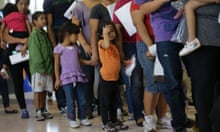
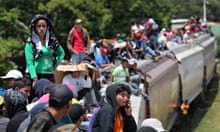
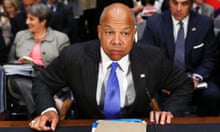
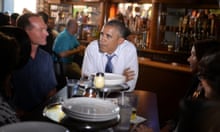
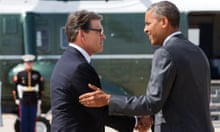


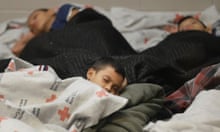

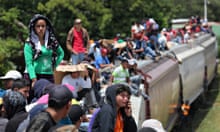
Comments (…)
Sign in or create your Guardian account to join the discussion